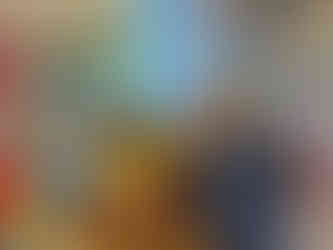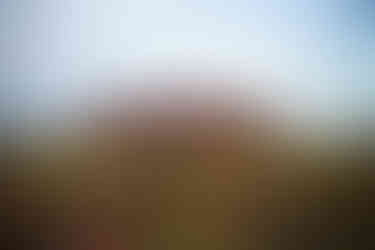Australian Adventure: Week 38, April 9-15, 2023
- Katie & Webster
- Apr 16, 2023
- 4 min read
This week was one to remember! We spent time in Uluru-Kata Tjuta National Park - a true Australian experience.
Before we start the blog, I want to share a little bit more about Uluru.
More than 550 million years old, the sandstone monolith of Uluru and the conglomerate domes of Kata Tjuta, rise abruptly, to over 380 metres in height, above the relatively flat surrounding sandplains and woodland. Their changing colours provide dramatic views for visitors, shifting from different tones of red, violet and orange as sunlight, shade and rain wash across their flanks. Uluru is often referred to as the heart of the ‘Red Centre’ and is one of Australia’s most recognisable landmarks.
Far from coastal cities, the rich red tones of Uluru and Kata Tjuta epitomise the isolation, starkness and beauty of Australia’s desert environment. When coupled with the profound spiritual importance of many parts of Uluru-Kata Tjuta National Park, the natural qualities convey a powerful sense of the very long evolution of the Australian continent.
Uluru-Kata Tjuta National Park has been home to Anangu people for tens of thousands of years, and contains significant physical evidence of one of the oldest continuous cultures in the world. Anangu is the term that Pitjantjatjara and Yankunytjatjara Aboriginal people, from the Western Desert region of Australia, use to refer to themselves. Pitjantjatjara and Yankunytjatjara are the two principal dialects spoken in UluruKata Tjuta National Park.
Traditional Anangu law, the Tjukurpa, is the foundation of the Anangu living cultural landscape associated with Uluru Kata Tjuta National Park. The Tjukurpa is an outstanding example of traditional law and spirituality and reflects the relationships between people, plants, animals and the physical features of the land. Tjukurpa was founded at a time when ancestral beings, combining the attributes of humans and animals, camped and travelled across the landscape. They shaped and created all of the features of the land and its landscapes. The actions of these ancestral beings also established a code of behaviour that continues to be followed by Anangu today. This code regulates all aspects of life, from gathering food and management of landscape to social relationships and personal identity. It is expressed in verbal narratives, lengthy Inma (ceremony and associated rituals and song lines), art and the landscape itself.
The landscape is imbued with creative powers of cultural history through Tjukurpa and related sacred sites. Powerful religious, artistic and cultural qualities are associated with the cultural landscape created by Mala, Lungkata, Itjaritjari, Liru and Kuniya ancestral beings. Within this landscape there is a gender-based cultural knowledge and responsibilities system, where Anangu men are responsible for looking after sites and knowledge associated with men’s law and culture, and equally Anangu women are responsible for looking after sites and knowledge associated with women’s law and culture.
Uluru aims to share this cultural history with visitors while providing an authentic Australian outback experience.
On Sunday, we flew from Brisbane to Uluru. We had a short layover in Sydney where we collected our bags, re-checked in, and boarded again directly to Ayres Rock Airport. When we arrived, we checked into our hotel, Sails in the Desert, and picked up our rental car. (Even the Easter Bunny came to Uluru to visit!!)
That evening, we watched the sunset over Uluru.
On Monday, we started our day early with a sunrise over Uluru. It was an early morning but worth the view. Uluru changes colour when the sun shines on it in different ways and at different angles. We were lucky to get some beautiful sunsets and sunrises.
In the afternoon we went for a Segway tour around the base of Uluru. It was 10km around the base and took us 3 hours. (Yes, we had to wear bug nets over our faces because the flies were everywhere!)
Later, we went to a didgeridoo workshop where Webster tried to play the iconic Australian instrument.
That night we went to Kata Tjuta, the other rock formation in the National Park. It was a beautiful orange colour with the sun shining on it.
On Tuesday morning, we were up bright and early to see the sunrise at Kata Tjuta. Then, we did a hike through the Valley of the Winds, between the rocks.
That night, we went to Field of Lights, an immersive art experience outside in the Outback. The display is designed to look like a flower native to the outback. The stars in the area were beautiful!
On Wednesday, we went to King’s Canyon in Watarrka National Park. The park had a scenic landscape of rugged ranges, rockholes and gorges, and is home to the Luritja and Arrente peoples. We went to the Kings Canyon cattle station, and for a hike in the National Park. On our way back into Uluru National Park, Webster had a camel burger for lunch (yes ... camel!)
That night, we saw one more sunset and spent some time at the pool before leaving.
On Thursday, we had a full travel day back to Brisbane. We flew from Uluru to Melbourne, and finally to Brisbane. We checked into our new apartment, got unpacked and had a great, long sleep.
On Friday, we played catch up on life. We got groceries, did some work, and went for a walk. On Saturday we welcomed a friend from Canada, Andrew, Webster’s friend from UW, who is touring across Australia. The Webster Brisbane highlights tour included a visit to Lone Pine Koala Sanctuary, Mount Cootha Lookout, Felon's Brewery, and Fortitude Valley.
This week we are heading to the beach, I'm back to school after reading week, and Webster is golfing. Thanks for following along with our blog! See you next week :)















































































































































































Comments